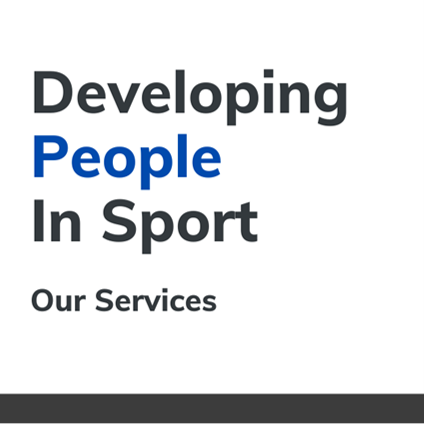As individuals, we all have unique learning styles, preferences and experiences that shape our approach to education, training, learning and professional development. However, Innovation Managers, Learning Development Managers, Workforce Development managers and Content creators can sometimes fall into the pitfall of knowing what is best for the end learner. By co-creating and collaborating with others in your NGB, Active Partnership or further afield we can tap into a wider pool of knowledge, skills and perspectives, and achieve greater success in developing learning and training that meets the needs of the sport and physical activity sector, which in turn leads to a better and more skilled workforce.
Based on my experience of developing learning programmes for a variety of organisations, here are my eight reasons why you should consider co-creating and collaborating more on your learning development.
1. Collaborating means everyone is learning
You could just write the learning and development programme on your own, but will this really give the best result? It will only highlight one person’s experience and may mean that Learning and Development only suit your vision. If you get a small steering group together of sector experts (e.g. tutors, quality assurers, workforce managers, digital learning content creators and senior managers) to collaborate and share their learning and experiences it will lead to a more innovative learning programme that suits the needs of your learners, whether that’s coaches, volunteers, or the professional workforce.
2. Better end-learner experience
There are lots of amazing learning programmes out there in the sports and physical activity sector where learners are highly satisfied, have a great learning experience and feel like the learning meets these needs, whether that be professional development, coaching or in a specialist subject area such as Equality, Diversity and Inclusion. You can bet that this enhanced end-user experience has utilised a collaborative approach where the end-user has been consulted and been able to feedback on the learner experience which in turn has enhanced the learning programme.
3. Improves problem-solving
We can all be tempted to work on our own especially when considering learning and development (I know that I personally have a vision and just want to get on with it) but bringing other people from the business alongside for the ride can be good for problem-solving. For example, having colleagues from education, administration, digital learning or marketing working together gives opportunities to problem solve better. For example, the administration processes can be embedded into the learner journey and the marketing campaigns can be shaped alongside the development of the learning programme, rather than as an afterthought. The marketing team can also promote the learning programme more effectively due to a better understanding of the concepts and journeys taken, leading to better communication rather than a communication breakdown. Collaborating with others can help you to identify blind spots and potential obstacles in your learning programme and route to market.
4. Creates better buy-in
Ever been in a meeting and someone just shows you the learning and development programme at its final stages? You are told that this is going to market in the next month, and you feel let down that you haven’t been consulted throughout the process. The learning programme in your opinion could have been better (based on your industry expertise) and you feel that if you have been given an opportunity to provide your opinion you could have influenced its direction. This highlights the pitfalls of not taking people along on the ride. If you do, they are more likely to publicly endorse the learning and training which can lead to bigger uptake and numbers and in turn more revenue or a better-upskilled workforce that is fit for the sector.
5. Shared Accountability
If there are more people involved in shaping the learning programme then there are more that share accountability for the end users learner's journey, the impact the learning programme has on your sport or organisation and potential revenue generation. This can help to keep the steering group motivated, on track, and accountable for both the success of the learning and training and its failure if it does not meet the needs of the workforce or income generation predictions like it was originally visioned.
6. Enhanced Creativity and productivity
By working collaboratively, you can tap into the creativity of others and generate new and innovative ideas that you may not have thought of on your own which in turn leads to better productivity. For example, you may have been asked to write a Level 1 coaching programme, but you come from a very high-level club environment which can skew the content creation. By collaborating with others from different environments you will be able to balance the biases and by coming at the learning from different perspectives. This can lead to more dynamic and engaging learning experiences.
7. Build Connections and Networks
Co-creating and collaborating with others is a great way to build connections and networks within your organisation and the sport and physical activity sector. This can lead to new opportunities to do things differently, learn from best practices from other sports or organisations and can also support professional development and career advancement.
8. Enjoyable and Fulfilling
Lastly, co-creating and collaborating on learning and development programmes with others can make developing learning a more enjoyable and fulfilling process, which also leads to a more enjoyable and fulfilling experience for the end users, such as aspiring coaches or volunteers. Personally, I think it allows you to engage with others who share similar interests and passions whether that be a sport, a training method, digital content creation etc. This can create a sense of community within the sport and physical activity learning development sector and feel like you are all working together to shape a better future for the sports and physical activity sector.
Related Services

Find out more about Developing People in Sport!



